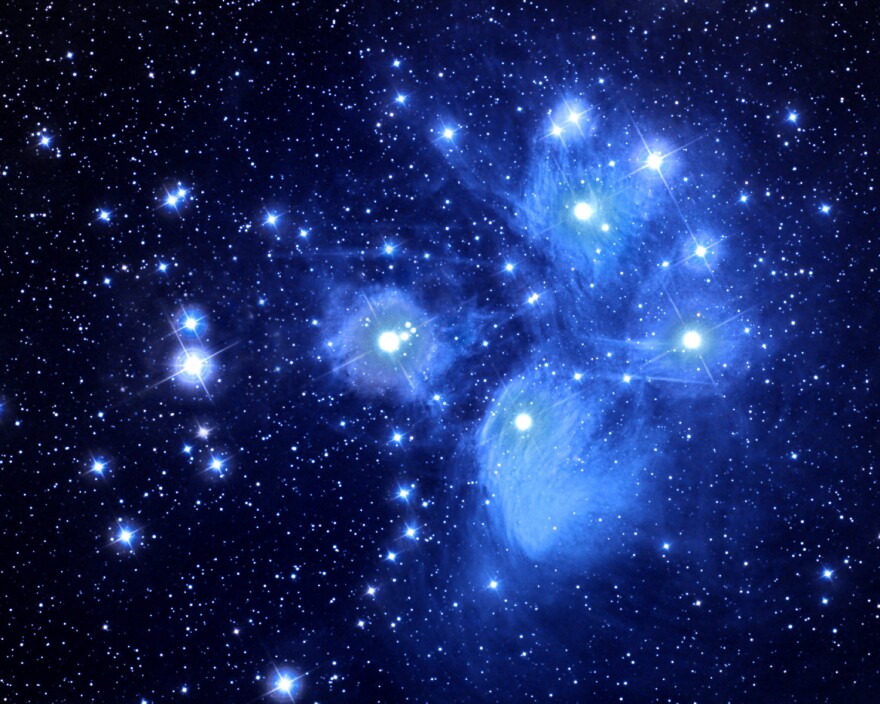The winter evening sky was dominated by two exceptionally bright “stars” that are actually planets — resplendent Venus, nearest of planetary neighbors, in the west, and regal Jupiter, largest of the planets, in the east. As we enter spring, Venus and Jupiter remain celestial highlights, and will treat us to a special double-feature in mid-April — each planet will be very close to a prominent open star cluster.
On April 10, Venus will be just 2.7 degrees (or 5 Full Moon diameters) south of the famed Pleiades, in the constellation Taurus. This unmistakable cluster appears to the unaided eye as a group of seven stars, but even low-powered binoculars will reveal many more. There are over a thousand members overall, mostly bright young blue-white stars. The Pleiades has been known since antiquity. The name comes from Greek mythology, denoting the seven daughters of Atlas. The cluster is mentioned twice in the Biblical Book of Job. Under different names, the Pleiades were known to the Aztecs, Celts, Maori, Persians, and Sioux. The Pleiades are 43 light-years wide, and 440 light-years from Earth. One light year is about 6 trillion miles.
In the meantime, Jupiter will be about 5 degrees west of the well-known Praesepe, the Beehive Cluster in the constellation Cancer. It is a bit dimmer than the Pleiades, appearing as a hive-shaped “cloud” to the unaided eye. Under small binoculars, it resolves into about 75 stars, across an apparent span of three Full Moons. More than a thousand stars comprise the cluster, which was also known to the ancients. Praesepe is the Latin word for “manger;” the Romans saw the cluster as a stable housing two donkeys (the two brightest stars.) Praesepe is 39 light-years wide, and 520 light-years from Earth.
Open clusters are gravitationally held together, not unlike our Solar System. But they don’t stay together forever; eventually, a cluster disperses as members are pulled away by interactions with interstellar matter. This will happen to the Pleiades and Praesepe — two hundred fifty million years from now. But not tonight — so go out and take in these stellar beauties, alongside their equally beautiful planetary visitors.
Western Slope Skies is produced by members of the Black Canyon Astronomical Society. This episode was written & recorded by Michael T. Williams.



